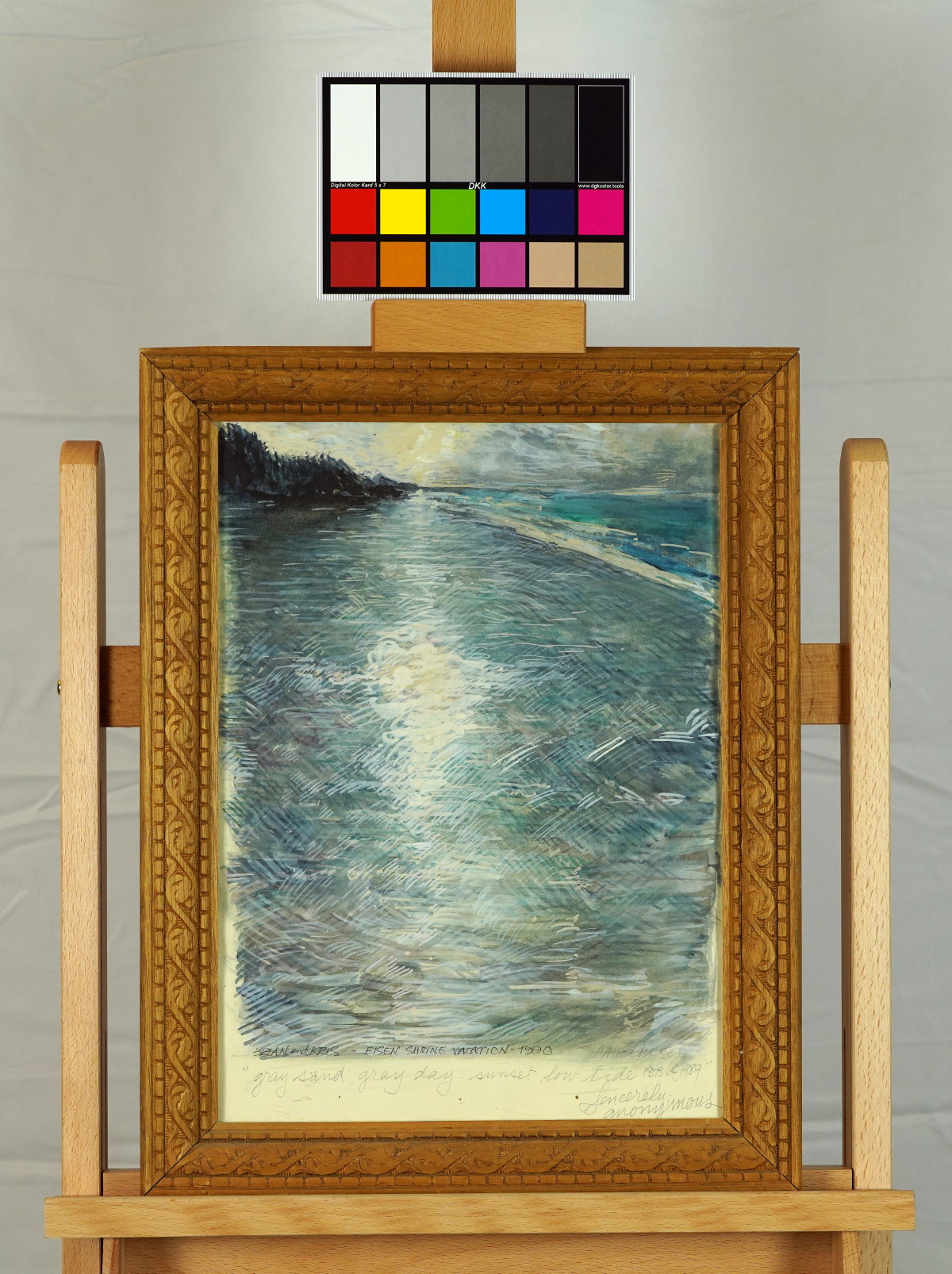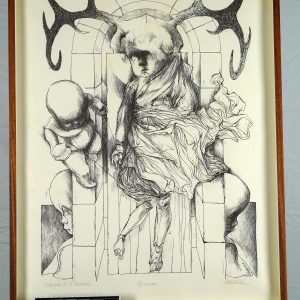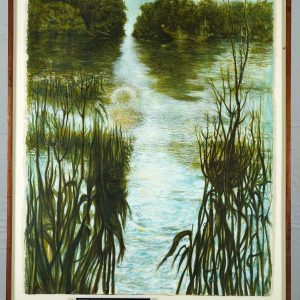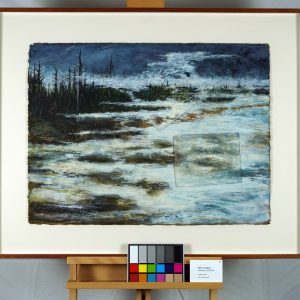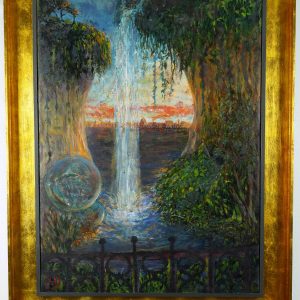Description
eisen shrine, 1989
Watercolor
Signed anonymous (what is the reason for this?)
15.5 x11.25 in. (image)
19 x 14.75 in. (frame)
original, includes certificate of authenticity from ArtTrust
The watercolor “Eisen Shrine Vacation” portrays an ocean view with a subtle representation of the shoreline and water. The colors are dominated by blue and gray hues, suggesting a serene yet melancholic atmosphere. The brushstrokes are dynamic, capturing the shimmering light reflecting off the water. There is a gentle gradient from the darker tones at the edges towards lighter areas in the center, indicating the fading light of a sunset or sunrise. In the lower part of the artwork, a handwritten inscription notes, “Gray sand, gray day, sunset low tide Feb 14, 1999,” and “Brian and Kris – Eisen Shrine Vacation 1990.”
From a Zen perspective, the painting embodies the concept of mujo (impermanence), suggesting that life is fleeting, like the ever-changing nature of the sea. The reflective surface of the water may symbolize the mind’s ability to mirror reality without clinging to it. Zen encourages an appreciation for the present moment, which this painting captures by emphasizing a still, transient moment where light dances on water.
Relating this to the I Ching, the image evokes Hexagram 59, Huan or Dispersion. This hexagram refers to the dissolution of obstacles and the spreading of one’s energy like water. The scene of the sea reflects the flow and movement associated with Huan, signifying that any barriers or challenges may dissipate over time, much like the fading tide in the artwork.
Blending the Zen and I Ching perspectives, this painting portrays both the beauty of the present moment and the inevitability of change. The emphasis on light and water suggests that while moments of clarity and peace may arise, they are not permanent, and we must learn to navigate the flux. The tranquil yet dynamic brushstrokes illustrate life’s rhythm — a continuous ebb and flow, where moments appear vivid and then gradually dissolve.
The piece could be seen as aligned with the Impressionist tradition, which sought to capture the immediate effects of light and color on the environment. The visible brushstrokes and emphasis on capturing a moment in time echo the style of artists like Claude Monet, who frequently painted water and reflections. However, the somber color palette suggests a departure from the usual vibrant tones of Impressionism, instead leaning towards a moodier, more introspective interpretation.
The handwritten notes add a personal, diaristic element to the work, grounding it in a specific memory, enhancing the idea of the fleeting nature of time and experience. This integration of text and imagery reflects a modern approach, connecting the aesthetic with a narrative or personal history.
*Shipping cost will vary, please inquire at sales@camblingallery.com before purchasing.
Currently ships from Oregon, USA
Member of artnet? Apply for a discount! Inquire about intergallery and permanent loans for museums.
Reproductions of this drawing are available in multiple sizes!
Click here to use our high-resolution viewer!
This artwork is available with a non-fungible token to ensure traceability and transparency of provenance.
The royalty factor – Unlike traditional artworks, such as paintings, mosaics, statues, and the like, NFTs can be programmed to provide royalties to you every time the painting (and token) is sold and resold – for eternity. That mind-bending Camblin you sold could be worth millions one day and provide income for your great-great-great grandkids!
Anti-forgery – The central idea underpinning NFTs is that they are built on the blockchain, which is meant to offer advanced security. Think of it like an un-erasable and un-avoidable copyright.
Easy authentication – Another compelling aspect of NFT art and NFTs in general is the ability to quickly and easily authenticate items, as the record of ownership is scrupulously kept on the blockchain.
